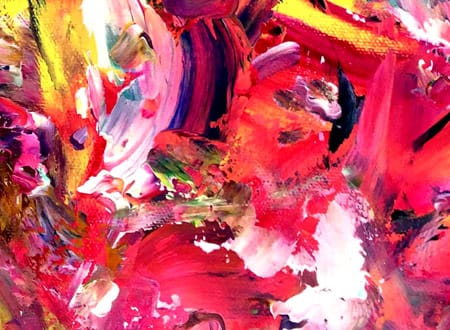Abstract Expressionism by Asmodelle. The abstract expressionists were mostly based in New York City, and also became known as the New York school. The name evokes their aim to make art that while abstract was also expressive or emotional in its effect. They were inspired by the surrealist idea that art should come from the unconscious mind, and by the automatism of artist Joan Miró. Within abstract expressionism were two broad groupings: the so-called action painters, who attacked their canvases with expressive brush strokes; and the colour field painters who filled their canvases with large areas of a single colour.
Abstract Expressionism emerged in the mid-20th century as a revolutionary form of modern art, a rejection of traditional aesthetics and a celebration of the freedom of individual expression. Pioneered by a cohort of American artists such as Jackson Pollock, Willem de Kooning, and Mark Rothko, this movement, which evolved primarily in New York, defied the conventions of representational art and welcomed an uninhibited flow of emotion, subjective interpretation, and dynamic spontaneity.
Abstract Expressionism is often divided into two main sub-genres: Action Painting and Color Field Painting. Action Painting, exemplified by artists like Jackson Pollock and Willem de Kooning, is characterized by an aggressive, dynamic application of paint, often directly from the tube or can, onto the canvas. Pollock’s unique technique of ‘dripping’ or ‘pouring’ paint onto the canvas placed on the floor epitomizes the spontaneity and direct engagement associated with this sub-genre.
On the other hand, Color Field Painting, associated with Mark Rothko and Barnett Newman, is characterized by large, unstructured fields of flat, solid color that spread across the canvas, often blurring the lines between figure and ground. These artists explored the emotional depth of color and scale, aspiring to evoke a transcendent, spiritual experience for the viewer.
The genesis of Abstract Expressionism can be traced back to the Surrealist movement, particularly the concept of “automatism” – spontaneous, subconscious creation. The chaotic global events of the 1940s, including World War II, also had profound influences on these artists. The existential anxieties and the devastation of the human spirit provoked artists to reject realism and seek a more profound means of expression.
Central to Abstract Expressionism is the concept of non-objectivity or non-representational imagery, which distinguishes this movement from its predecessors like Cubism and Surrealism. While these movements still relied on some degree of representation, Abstract Expressionists completely abandoned recognizable forms, embracing the notion that art doesn’t necessarily have to represent anything specific from the physical world. Instead, their artworks serve as a conduit for raw emotional expression, a direct link from the artist’s subconscious to the viewer’s perception.
One notable aspect of Abstract Expressionism is its emphasis on the process of creation. The physical act of painting – the gesture, movement, and the artist’s interaction with their materials – became as significant as the final product. The canvas was no longer a passive surface but an active participant in the artistic process, recording the energy, rhythm, and emotional intensity of the artist’s performance. This aspect of Abstract Expressionism emphasizes the artists’ fundamental belief in authenticity and the spontaneous act of creation.
However, despite its radical departure from traditional aesthetics, Abstract Expressionism is not devoid of allusions and metaphors. Rather, its abstract forms and strokes are often interpreted as visual metaphors for existential themes, inner turmoil, or spiritual transcendence. In this sense, Abstract Expressionism can be seen as a highly subjective, symbolic language that transcends the boundaries of literal representation.
In conclusion, Abstract Expressionism represents a significant milestone in the history of art, marking the shift from representational art to a more personal and subjective expression of human experience. It opened the doors to a new aesthetic universe, where the act of painting was not merely a depiction of the observable world, but an exploration of the emotional and spiritual depth of human existence. The legacy of Abstract Expressionism continues to resonate in contemporary art practices, encouraging artists to break conventions, experiment with form, and dive deep into the abstract realm of emotions and ideas.


